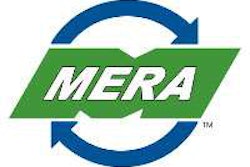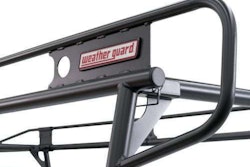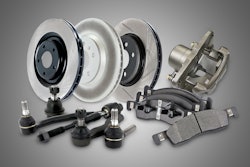By Edward Kuo, Kuo Consulting Group
There has been a considerable amount of chatter around the industry revolving around product information standards. The initiative taken on by the Auto Care Association to develop these standards has encountered significant resistance. From my perspective, it can only be because of a lack of clarity behind the scope of these standards.
Keep in mind, this standard is absolutely NOT about forcing manufacturers to use a year/make/model catalog system. That’s just not going to happen. This is also NOT about making information available to the universe. This is only about giving manufacturers an easier way to communicate any parts information it desires to their existing and future distributor partners and end users — their chosen business partners and customers.
Being both a technology geek and a history buff, I feel the need to contribute a historical perspective on a similar standard (price file formats) and why the failed attempt to gain universal support continues to cost the aftermarket millions of dollars. In reality, the price file format standard is the predecessor to the product information standard effort.
You know the problem.
Every year, manufacturers send price sheets to their distribution partners with basic pricing update information. Each distributor makes formatting adjustments to that file (if they receive electronic versions), then figures out a way to upload the file into their ERP/business system. Some files are easier to configure than others, but with 300 vendors updating their files periodically throughout the year, distributors must commit significant resources to this very time-consuming process. Alternately, uploading price files winds up as an expensive, but necessary service provided by the business system provider.
Here’s the interesting thing — back in 2005, our industry nearly succeeded at building a better mousetrap for price files. HDeXchange brought together dozens of leading distributors and manufacturers and agreed on two things:
- Electronic price files required at least 12 fields of information to be usable.
- If everyone used a common file format, uploading price sheets automatically was possible.
Unfortunately, it failed. The concept was correct and the need was there, but not enough companies understood the “whys?” and “hows?” to make it work.
Without the full support of heavy-duty associations, marketing groups, distributors, manufacturers and business system providers, the Price Communication File Specification (PCFS) wound up getting buried at the end of the Internet, though it is still available HERE for entertainment purposes only. As a result, companies still waste too much time and too many resources loading pricing into distributor systems.
Fast forward to 2018 and the current reality for the heavy-truck parts industry: it’s a digital world. I have manufacturer clients who are working feverishly at creating the robust digital content their distributor partners require of them. I have distributor clients pushing to find innovative ways to present this content to their customers including, but not limited to, e-commerce sites.
Creating and consuming — it’s become a race to capture the new generation of online customers. Every company that invests time and energy researching digital selling will reach the same two conclusions, the quality of available content is terrible and the process of formatting data for partners to consume is even worse.
Want an example?
Let’s look at some questions that are being asked about images and how they should be formatted:
- How many images do I need?
- What pixel sizes should I use?
- Which angles should I take the photos from?
- How do I take a 360 degree image?
- Can I use a computer rendering?
- Why can’t I use a .pdf format from my print catalog?
- What’s the difference between .tiff, .png, .jpg, .gif, .bmp and others?
- What’s a vector (Victor)?
- Where do I store these images?
Our friends on the automotive side of the industry created a solution long ago for their automotive members — the Product Information Exchange Standard (PIES) — available HERE. It’s not perfect and nor is it 100 percent embraced, but nobody can deny the success this document has had in improving data quality in the automotive aftermarket. Now, PIES has about 2.3 billion possible fields (okay, that’s a slight exaggeration), and many do apply to the heavy-duty truck side of the aftermarket.
After studying this behemoth PIES document, you can see why heavy-duty stakeholders need to create and embrace its own simplified and customized version. It would provide the direction and formatting rules our industry currently lacks. Simply creating robust digital content isn’t good enough for manufacturers — it must be formatted and distributed in a way that is consumable for all their partners.
In this case, everyone is a stakeholder, and we should all refuse to let this industry take another “ostrich head in the sand” approach to solving this obvious need. We all need to demand that our trading partners support this effort and it needs to be led by people in the industry for the industry. Heavy duty can’t let this become another price sheet saga, because I guarantee this time, it’ll be exponentially worse and more expensive.
Without a successful industry standard for digital content, only the largest companies like Amazon and automotive retailers will be able to financially dedicate vast amounts budget to digital content collection. For the smaller independent companies, the process just won’t be sustainable.
Who then will win the next generation’s business?
Edward Kuo is the President of the Kuo Consulting Group (www.kuoconsulting.com). He has spent more than 20 years on the front lines of the battle between change and complacency in the heavy-duty aftermarket, working for HDX and Datalliance, and partnering with numerous other software companies. He is now venturing on his own, providing project-based digital and data solutions to the aftermarket and focusing on creating digital content and implementing B-to-B and B-to-C solutions.










